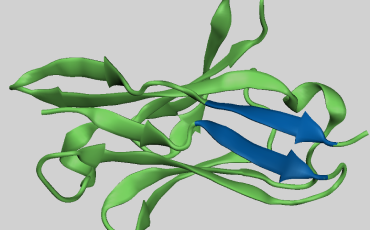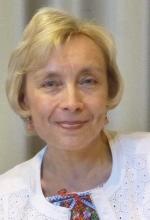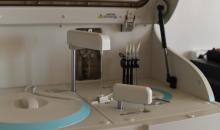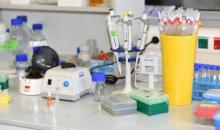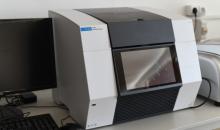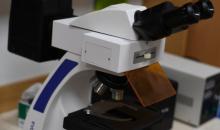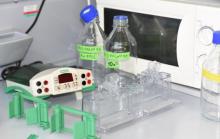Physiology

The course is designed in such a way that the participants will get the necessary knowledge from various fields of physiology and be able to use it for practical purposes. Within the course, we will consider the basic principles of cell physiology, the general characteristics of the sensory systems of the human body, the somatic and autonomic nervous systems, the functions and mechanisms of the visceral systems, the laws that determine their activity, and the mechanisms of regulation of physiological processes. The lectures are complemented by seminars, where we will try to find answers to the current problems of modern physiology.
Download of lectures and other teaching material
You need to be registered to the course and to login to the site to see the complete list lectures and teaching material available to download.
Please consider the copyright. You are allowed to share only teaching material visible to users that is accessible without authorization.
Course: 13 lectures, 5 seminars
Lectures: Olga Garaschuk, Volodymyr Manko
Seminars: Volodymyr Manko, Volodymyr Merlavsky
Transport of substances across biological membranes. Direct and indirect mechanism of action of primary messengers. Ionotropic and metabotropic receptors. The role of G-proteins in physiological signal transduction. cAMP system. Adenylate cyclase pathway of information transduction. The role of Gs- and Gi-proteins. cGMP system. Guanylate cyclase pathway of information transduction. Phosphoinositide pathway of information transduction. The role of Gq/11-proteins. Са2+ as intracellular messenger. Са2+-transporting systems of plasma and intracellular membranes. Са2+-calmodulin system.
Resting membrane potential. Action potential, its physiological role and mechanisms of generation. Phases of action potential upon intracellular recording. Mechanisms of action potentials propagation. Classification of nerve fibers by the rate of propagation of the action potential. Laws of action potentials conduction by nerve fibers.
Classification of synapses. Electrical and chemical synapses. Mechanism of excitation transduction via chemical synapse. Exocytosis. General scheme and role of membrane proteins. Synaptic mediators. Properties, mechanism of action and inactivation. Fast and slow postsynaptic processes. The role of ionotropic and metabotropic receptors. Properties of excitatory and inhibitory postsynaptic potentials. Temporal and spatial summation of postsynaptic potentials. Presynaptic and postsynaptic inhibition.
Skeletal muscles. Muscle fiber. Sarcomere. Physiological properties and mechanism of skeletal muscle contraction. Slow and fast neuromotor units. Energy of muscle contraction. Work, strength and muscle fatigue. Structural features and electrophysiological properties of smooth muscle cells. Classification of smooth muscles. The mechanism of contraction and relaxation of smooth muscle. The mechanism of regulation of smooth muscle contraction involving Gq- and Gs-proteins.
General description, role and mechanisms of transduction, transformation and transmission of sensory information in sensory systems. Sensory network. Classification of sensory systems and receptors. Visual sensory system. Optical system of the eye and its significance. Architecture of the receptor apparatus of the eye. Structure of retinal photoreceptors and mechanism of transduction. Architecture of receptor fields of retinal ganglion cells. Transformation of receptor potential into a sequence of action potentials. Auditory sensory system, components and functioning. Gustatory and olfactory sensory systems, components and functioning. Somatosensory system and pain sensing.
Spinal reflexes. Spinal shock and hyperreflexia. Decerebrate rigidity. Descending and ascending pathways of the spinal cord. Motor functions of the medulla oblongata and pons. The role of the substantia nigra and red nuclei of the midbrain legs in the regulation of skeletal muscle tone and phase contractions. Reflex arc and physiological significance of four-humped reflexes of the midbrain. Motor functions of the cerebellum. Disorders that occur due to removal or damage of the cerebellum. Motor functions of the basal ganglia of the cortex of the large hemispheres. Motor zones of the cortex of the large hemispheres. Cortical representation of muscles in the primary motor area. Premotor and secondary motor zones of the cortex of the large hemispheres.
Peculiarities of the autonomic nervous system organization. Features of the vegetative reflex arc. Mediators of the autonomic nervous system and their mechanism of transduction. Comparative characteristics of the sympathetic and parasympathetic nervous systems. The role of the sympatho-adrenal system, cortisol and endogenous opiates. General characteristics of endocrine glands. Properties of hormones and their classification. Hypothalamic-pituitary connection.
Composition, functions and physicochemical properties of blood. Structure and functions of erythrocytes. Hematopoiesis. Respiratory function of blood. Blood groups. System AB0 and Rh. General characteristics, classification and functions of leukocytes. Immunity. Nonspecific and specific mechanisms. Congenital and acquired. Allergy. Platelets. Vascular-platelet and coagulation hemostasis. The role of plasma coagulation factors. Fibrin clot retraction.
Properties of the heart muscle. Automation of the heart. Regulation of heart activity. Frank-Starling's law. Electrical conduction system analysis. Propagation of excitement in the heart. Cardiac cycle. Electrocardiogram. Arterial pulse. Structure and types of vessels. Basic principles of hemodynamics. Pressure in different parts of the big circle of blood circulation. Blood pressure. Laminar and turbulent blood flow. Volumetric and linear blood flow rate. The rate of blood flow in different parts of the big circle of blood circulation. Nervous and humoral regulation of blood vessel tone.
The main stages of respiration. Mechanism of inhalation and exhalation. The role of the respiratory muscles. Intrapleural pressure and elasticity of the lungs and their role in respiration. Surfactant. Lung volumes. The composition of inhaled, exhaled and alveolar air. Gas exchange in the lungs and tissues. Partial pressure and tension of gases. Blood gas transport. Nervous and humoral regulation of respiration. Respiratory center of the medulla oblongata. Kidneys: structure and blood supply of the nephron. Composition and properties of primary and secondary urine. The mechanism of formation of primary and secondary urine. Regulation of renal function.
Secretion and secretory cells. Classifications of exocrine glands. Basal and stimulated secretion. The mechanism of fluid secretion. Digestion in the mouth. Regulation of salivary secretion. Swallowing. Digestion in the stomach and small intestine. Intestinal juice. Secretion and composition of pancreatic juice. Regulation of pancreatic activity. Liver. Gallbladder. Bile. Composition and functions of bile. Enterohepatic circulation of bile acids. Digestion in the colon. The role of symbiotic microorganisms. Mechanisms of absorption of nutrients, water and mineral salts in different parts of the gastrointestinal tract.
Congenital and acquired forms of behavior. Memory formation. Forms of learning. Circadian rhythm and sleeping. Physiological fundaments of motivation and emotions. Neural fundaments of speech.
Essentials of the cell physiology. The cell mechanisms of the signal transduction. Generation of the bioelectrical potentials. Contraction. Secretion.
Physiological properties and mechanisms of visual and auditory sensory systems.
Essentials of cardiovascular physiology.
Gas exchange in the lungs and transport of gases by the blood.
Essentials of the stress physiology. Its advantages in the organism adaptive potential forming. The dangers caused by stress.

